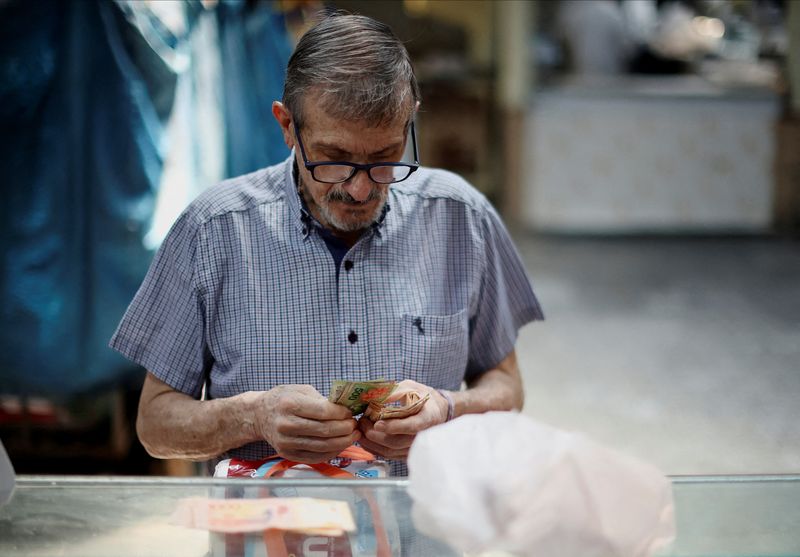By Hernan Nessi
BUENOS AIRES (Reuters) – Argentina’s economy is expected to stagnate and recover slowly in the second half of the year, according to forecasts by analysts and economists.
Economic activity in Argentina has slowed sharply since late last year, the result of a crisis inherited by libertarian President Javier Milei, who took office in December and has implemented a strict austerity program combined with deregulation of the economy.
Although Milei’s policies have balanced government finances and inflation, at around 280%, one of the highest in the world, appears to be slowly declining, consumption has collapsed and the economic contraction has pushed half the population into poverty.
According to Federico Rouco, economist at Empiria Consultores, the economic contraction is likely to slow unless there is a major exchange rate disruption.
“What’s coming looks like a slow recovery, a sticky bottom,” he said.
Rouco noted that the economy, excluding agriculture and mining, shrank 6.7% in the first four months of the year: “Real wages and employment are falling and it will take time for them to return to previous levels.”
Rouco added that the sectors most important to the recovery of the economy have been hit the hardest.
The construction sector in particular was hit hard by the loss of government spending and the government halting projects that were far from being completed.
Construya, an association of 12 major construction companies, reported that while the private sector sales volume index rose 10% in June from the previous month (seasonally adjusted), it fell 32% from a year earlier.
“We are seeing a gradual improvement after several months of deep contraction. We see this as a positive trend,” Construya said in a statement.
Analysts polled by Reuters predict that economic activity will pick up very slowly from the second half of 2024.
Eugenio Mari, chief economist at Fundacion Libertad y Progreso, expects the May economic activity indicator, known as EMAE, to grow on a monthly basis, although still down from a year earlier.
“There will still be a few months left before the economy returns to the level of the first half of 2023,” he said. “Several indicators point to a change in trends, but we are still far from a strong recovery,” he said.
(Reporting by Hernan Nessi; Writing by Sarah Morland; Editing by Alistair Bell)







